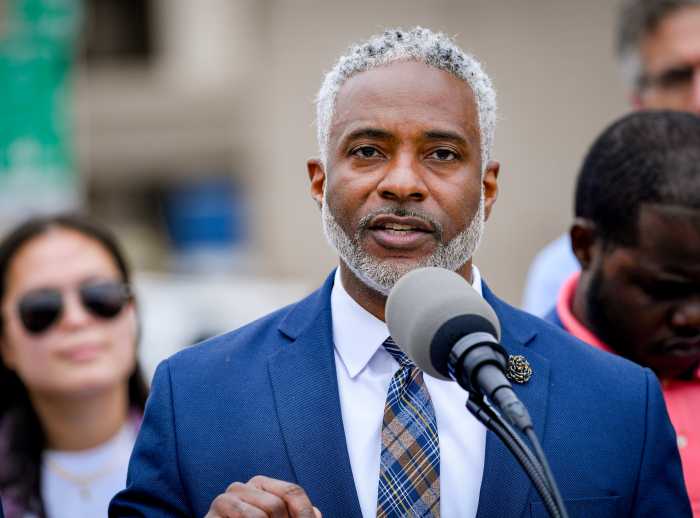It’s hot, it’s humid, it’s summer: full of swampy, muggy days that leave you dripping after a quick trip outdoors and afternoon thunderstorms that seem to do little to quell the heat. All that hot weather brings a lot of misconceptions along with it. For one, despite what you’ve heard, there’s no such thing as heat lightning. It’s a real live thunderstorm sparking electrons far off in the distance.
While we can’t make any promises about cooler weather in the immediate forecast, we can dispel some of the myths about the season – and we guarantee that sometime later this year, the heat will be gone. (And it’ll be time to deal with some myths about winter.)
1. Humid air is denser than dry air.
We all know the feeling: Step outside into a hot, muggy day, and you’d think you could cut the air with a knife. Some say it feels like swimming. When the humidity gets high, the air seems dense.
Actually, though, the air is less dense on those hot, humid days than on the hot and dry ones. That may seem counterintuitive – how can air become less dense if we add more water vapor to it? But density is determined by two things, mass and volume. Take the mass of a material and divide it by the volume of the material, and you have its density. The special thing about gas – or air, in this case – is that a fixed volume at the same temperature and pressure will always have the same number of molecules in it, no matter what kind of molecules we decide to add. Amedeo Avogadro discovered this phenomenon in the early 19th century, and since then, it’s been known as Avogadro’s Law.
Let’s say we take one cubic foot of air at a temperature of 80 degrees, and we add water vapor to it. Avogadro’s Law says the other molecules in the air, such as oxygen and nitrogen, must leave that space. Water vapor molecules have a lower mass than other molecules in the air. Nitrogen has a molecular weight of 28, and oxygen has a weight of 32. Water vapor, on the other hand, has a molecular weight of just 18. So if you replace “dry air” molecules with water vapor, you have an overall lower mass per volume of air, and thus a lower density.
2. Summer is warm because it’s when Earth is closest to the sun.
The sun is a mass of flame more than 1.3 million times larger than Earth, with an average temperature of nearly 10,000 degrees.
That’s pretty hot. So it makes sense that summer happens because Earth is closest to the sun at that point in its orbit – right? Wrong. “This is by far the most common misconception about the relationship between Sun and Earth,” NASA says, “one that is unfortunately perpetuated by lousy diagrams in most school textbooks.” It’s true that Earth’s orbit around the sun is not a perfect circle; it’s an ellipse. But it’s still closer to being a true circle than an oval. And in fact, we’re farther from the sun during the summer than we are in the winter.
The mechanism behind our summery heat is the Earth’s tilt. As we make the year-long journey around the sun, there are times when each hemisphere is tilted toward and away from it.
This has two effects. First, tilting toward the sun means more hours of sunshine during the summer. That alone means there’s more time for the day to warm up. The second, and more significant, effect is that the sun’s rays shine from a more direct angle. So more heat can hit the ground in the summer than if the sun was very low in the sky, as it is in the winter.
On the summer solstice, which usually happens on June 21 or 22, the North Pole is tilted as far toward the sun as it’s going to be all year. The solstice is the longest day of the year, in terms of daylight, in the Northern Hemisphere, and we also consider it to be the official first day of summer.
3. Relative humidity can help us judge how uncomfortable the day will be.
Forecasters are repeatedly told that we should report the relative humidity percentage in the summer. But humidity as a percentage is a misleading and not particularly useful metric.
Relative humidity tells you how close the air is to saturation, but it does not tell you the overall amount of moisture in the air. Hot air can hold a lot more water than cooler air, so we often have a moister atmosphere on a hot day with lower relative humidity than on a cool day with higher relative humidity. So it’s less humid on a 65-degree day with a relative humidity of 100 percent than when it’s 100 degrees with a relative humidity of 40 percent.
In regions where it’s both hot and humid, relative humidity levels are usually between 40 and 50 percent, and very rarely higher than 55 percent. If forecasters report that the humidity is “just” 40 percent when it’s 100 degrees, the public may not appreciate that that’s quite humid.
The dew point, the temperature to which the air would have to fall to reach saturation, is our preferred way of quantifying and describing humidity. It provides an absolute sense of the amount of moisture in the air.
A dew point below 55 indicates low humidity and comfortably dry air, and one above 65 indicates high humidity and increasing levels of discomfort. If you see a dew point report of 70 or higher, humidity levels are venturing into unbearable territory.
In other words, it’s probably summertime in the Southeast.
4. D.C. is miserably humid in the summer because it was built on a swamp.
This one is a double myth. Not only was the District of Columbia not built on a swamp, but even if it had been, that wouldn’t necessarily affect our weather hundreds of years later. The idea that D.C. used to be swampland is a cliche, especially among politicians who like to bash the city, but according to local historian Don Hawkins, only about 2 percent of the land in Pierre L’Enfant’s original plan would meet the definition.
Instead, the District’s abhorrent summer humidity levels stem from the direction of its prevailing winds, which come from the south. This airflow draws waterlogged air northward from both the Gulf of Mexico and the Atlantic Ocean – sometimes right up the Potomac, funneling in even more moisture. It’s not the land the District was built on that’s the problem; rather, it’s the air streaming toward it.
5. Hottest weather comes in August.
In June and July, we frequently deliver depressing forecasts about punishing heat waves. A common reaction is: “It’s not even August yet!” But by the time August rolls around, the hottest days of summer have usually come and gone.
July is Washington’s hottest month, and by a sizable margin. The average high temperature in July (88.4 degrees) is about two degrees warmer than the average high in August (86.5 degrees). D.C.’s average temperature peaks on July 15 and then begins a slow decline in August.
Cold fronts, sapped of energy at summer’s height, have difficulty penetrating south of D.C. in July. But by August, aided by shorter days and a lowering sun angle, they often have a bit more oomph, especially as Labor Day approaches. There are other parts of the country where August is the hottest month, though, especially in the Northwest and the western Gulf Coast.
Fritz is an atmospheric scientist and The Washington Post’s deputy weather editor. Samenow is The Post’s weather editor.



























